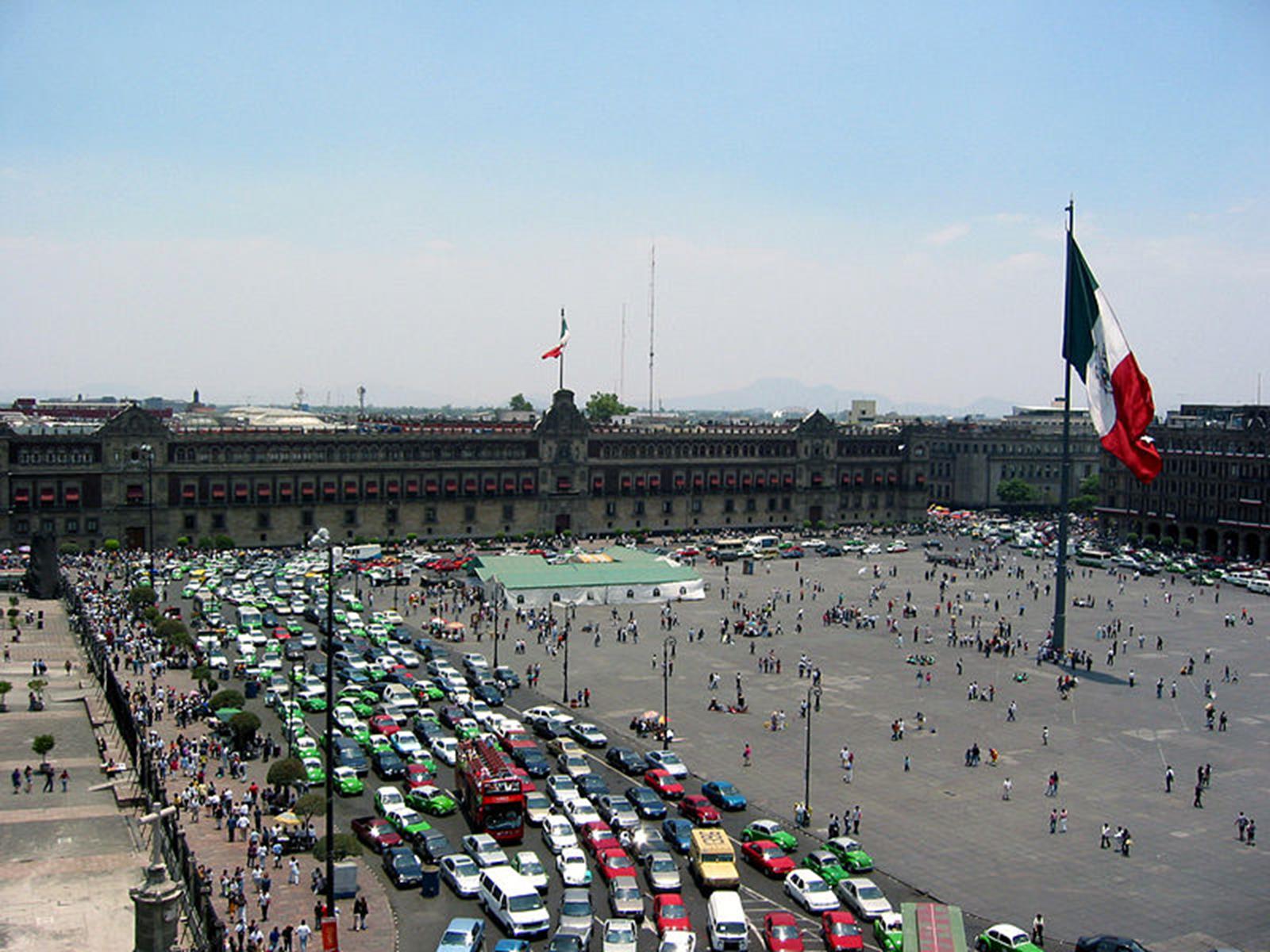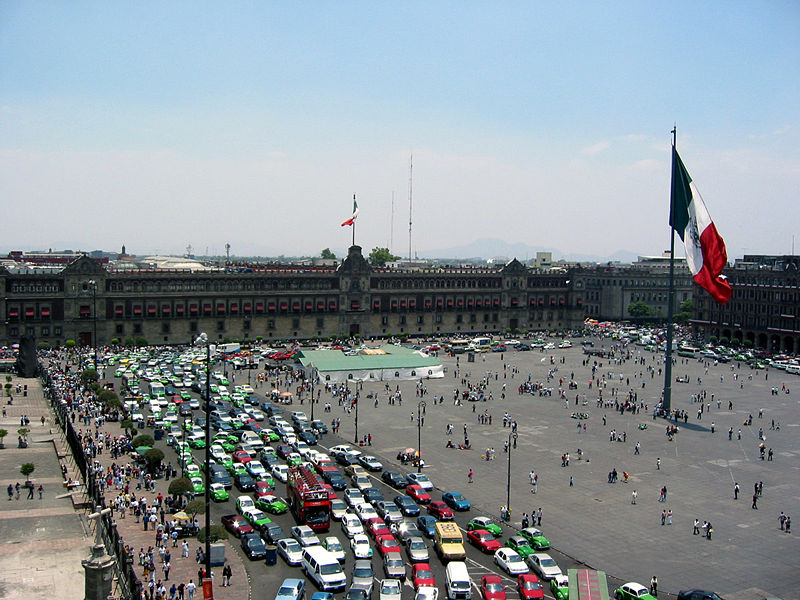There are many ways to learn about a country’s history – through its music, its literature, even its food. But architecture? While architectural styles can be derivative (the Victorians, in particular, were huge fans of imitating the décor of other lands and other times), they can also tell a story. And this is the case when we look at the Spanish Colonial-era architecture in Mexico City.
Visitors to the modern Mexico City can be forgiven if they initially overlook the area’s history. Today’s Mexico City is both the capital of a nation and a sprawling, diverse metropolis. But journeying into the city’s historic district can yield an interesting way to experience the growth of a country: through the styles of its buildings.
Mexico and the Spanish Colonial Period

National Palace Courtyard. Credit
If natural history is a choice between eating and being eaten, then it’s fair to say that the history of any given civilization is divided between conquering and being conquered. The area in and around Mexico City was claimed by several tribes, culminating in the Aztecs. They built the present site of Mexico City according to a grid system, and by the early 1500s, it had become a bustling place with an estimated population of well over 200,000.
And then the Spanish arrived. Conquering the Aztecs with the help of native warriors, they rechristened the city New Spain and built their palace, main square and cathedral where the Aztecs had their royal palace, temple and holy ground. For approximately 300 years, the area would be under the control of Spain.
And that’s where our journey starts – on that square, now popularly called Zocalo.
Visiting Iconic Spanish Colonial-Era Sights in Mexico City
What, exactly, is Spanish Colonial architecture? In the strictest sense, you could apply it to those distinctly Spanish-style buildings that dot Mexico and much of the American Southwest. But this term can also be used to describe a range of techniques used during Spain’s dominion in Mexico. Be on the lookout for the following elements in the earlier versions of Spanish Colonial:
- Symmetry
- Clean, classically-inspired lines
- Moorish influences, especially domes and pointed arches
As the centuries passed and Mexico grew closer to independence, a new style arose: Mexican Baroque, which added exuberant decorations, often intricately worked, to otherwise rather sober, imposing buildings.
Let’s start where we left off: at the heart of Mexico City’s historic district.

Mexico City Zocalo. Credit
Zocalo (formally known as Plaza de la Constitución). While Zocalo (which means “pedestal” in Spanish, after a monument that never got beyond its pedestal) doesn’t have any architecture per se, it does offer great views of two other Spanish Colonial-era buildings, the Palacio Nacional and the Catedral Metropoliana. This is also one of the largest squares in the world, and the hub of Mexican cultural and political life.
Palacio Nacional. Mexico’s National Palace takes up the entire east side of the Zocalo. Built on the site of the Aztec tlatoani residence, it contains some of the actual stones used in the earlier building. In time, it became the residence for the viceroys who governed New Spain; today, it houses Mexico’s government buildings. Among many other things, the Palacio is famous for its 14 courtyards – some of which are accessible to the public – and for the Diego Riviera murals that were painted in the 1920s and 1930s. Although its architecture has changed somewhat over the intervening centuries, it’s viewed as an excellent example of the Spanish influence in Mexican building design.
Catedral Metropolitana. This huge cathedral, designed by a Spanish architect to reflect the Gothic cathedrals of Europe, is also known as the Metropolitan Cathedral of the Assumption of Mary. Like the National Palace, the Cathedral is built on top of Aztec holy ground; Templo Mayor, an ancient site of Aztec worship, is nearby. Construction on this massive edifice took 240 years, from 1573 to 1813.

Chapultepec Castle. Credit
Castillo de Chapultepec. Set in the 1,600 acres that make up the Bosque de Chapultepec, or Chapultepec Park, this impressive castle has served as a palace, presidential residence and observatory. Today, it houses Mexico’s National History Museum. It’s a blend of several styles, including the neo-classical and neo-Gothic styles favored by the Spanish in the late 1700s.
Palace of Iturbide. Built between 1779 and 1785 and commissioned by the Marquis of Jaral de Berrio as his daughter’s wedding present, this imposing edifice (at Av. Francisco Madero 17) was meant to rival some of the finest houses in Europe. It gets its current name from the fact that Augustin de Iturbide, better known as Augustine I of Mexico, lived here briefly. Its ornamental stone walls are excellent examples of the Mexican Baroque style that began to be popular at the end of the Spanish Colonial era.
In history as well as in architecture, it’s hard to tell where an influence begins to leave off. The closing of the Spanish Colonial period in Mexico may have ended in the 1820s, but its influence is still felt today in the style, language and culture of Mexico.
Did you experience these sights, or have you booked a travel group to Mexico City recently? Leave us a comment below and share your story.
Photo Links:
Zocalo:
National Palace Courtyard:
National Palace front:
Metropolitan Cathedral:
Palace of Iturbide:
Chapultepec Castle:






